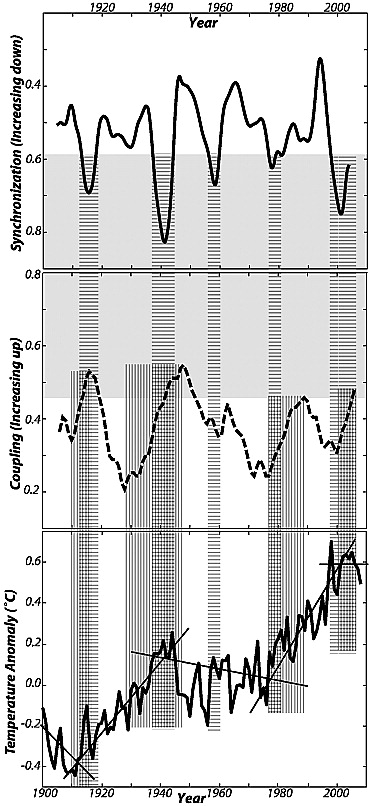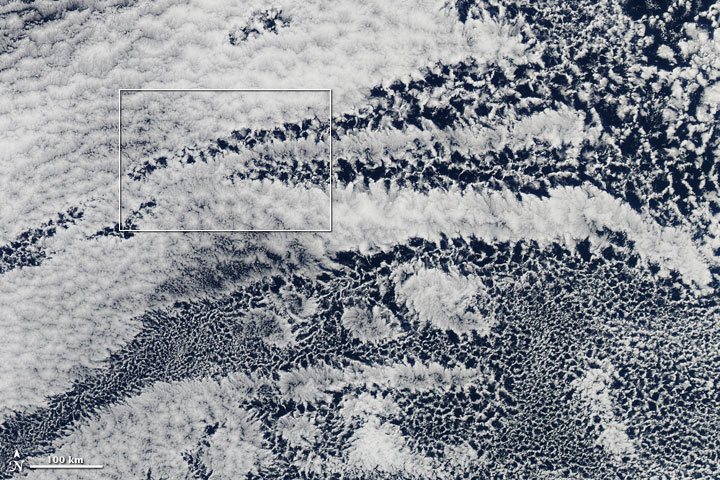The sun is the source of the vast majority of heat on the surface of the planet. The atmosphere is mostly transparent to incoming visible light and the surface is warmed. Warm surfaces emit infrared (IR) photons. At specific IR frequencies greenhouse gases resonate with outgoing photons resulting in vibrations, rotations, translations and electron orbit excitations. All with the quantum photon energy of the Planck constant times the frequency. The kinetic energy of molecules – heat – is transferred to other molecules in the atmosphere heating the atmosphere. Ultimately photons will be re-emitted in random directions as electron orbits jump to a lower quantum state of excitation – bouncing around the atmosphere – with more greenhouse gases micro seconds longer than they otherwise would. It is this mechanism that maintains the habitability of the planet – and more greenhouse gases result in incremental warming.
Small changes is solar activity – or orbits – are insufficient to explain much of the warming or cooling of the 20th century. But there is apparent an internal variability that has added to and countered Anthropogenic Global Warming (AGW) – and the proximate cause of this is variability of cold and nutrient rich upwelling in the eastern Pacific. El Niño- Southern Oscillation (ENSO) and the Pacific Decadal Oscillation (PDO) have a common origin. PDO positive (negative) states in the north eastern Pacific have exactly the same periodicity as regimes of enhanced frequency and intensity of El Niño (La Niña) in the equatorial Pacific.

Changes in trajectories of global surface temperature occur at the same times as shifts in Pacific climate state. This study from which the figure above is taken (Swanson et al, 2009, Has the climate recently shifted?) used network math across a number of climate indices to confirm that synchronous chaos is at the core of the global climate system. Climate is a globally coupled spatio/temporal chaotic system. The rules of chaos include regimes and abrupt shifts that feature in climate data over all scales. More or less upwelling in the eastern Pacific is linked to changes in wind and gyre circulation – in both hemispheres – driven by changes in surface pressure in the polar annular modes. This in turn has been linked to solar UV/ozone chemistry translated through atmospheric pathways to polar surface pressure. Solar UV is a Lorenzian trigger for upwelling that then resonates in the dynamic Pacific response in a complex interplay of wind, cloud, currents and geopotential.
Changes in global cloud cover are dominated by changes in Pacific cloud over the eastern upwelling regions. Clement et al (2009), Observational and Model Evidence for Positive Low-Level Cloud Feedback – regressed cloud amounts against sea surface temperature.

It is caused in part by Rayleigh–Bénard convection in a fluid – the atmosphere – heated from below. Closed cloud cells tend to form over cool, upwelling zones increasing global albedo – open cloud cells form over warmer surfaces – decreasing planetary albedo (Koren et al 2017).


https://earthobservatory.nasa.gov/IOTD/view.php?id=43795
The combination of AGW and internal variation produced an incremental rate of warming in the 20th century of 0.1K/decade. Not in itself an existential threat. And one that may diminish this century with a 7% reduction in solar UV possible. This would translate into more negative polar annular modes, more north/south blocking patterns and substantial Northrn Hemisphere (NH) cooling – this NH winter may be a taste of things to come – and enhanced upwelling in the eastern Pacific (Oviatt et al 2015). But chaos introduces an intractable uncertainty that preclude any simple prognostication. The place to look for uncertainty is in the deepwater formation zones of the north Atlantic that are implicated in abrupt and catastrophic change over the last 800,000 years.


in the form of Madden Julian Oscillations. The long-term aggregate of El Nino events plays a seminal role in determining the state of the PDO and hence indirectly the world’s mean temperature on decadal timescales.
Robert,
My comments seem to be going to your spam folder.
It is now 5.30am and I am on my 1st cup of coffee. Winds and current in La Niña pile up warm surface water in the western Pacific. When trade winds falter this water flows east to crash against the shores of the America’s. The MJO may indeed play a role in atmospheric instabilities that trigger El Niños. But upwelling in the east is what causes enhanced trade winds in the first place and the question to ask is what causes that to vary.
https://watertechbyrie.com/2017/01/12/an-earnest-discovery-of-climate-causality/
The Moon!
The long-term La Nina pattern shows an 11-year variability that driven by something connected to the sunspot cycle. Superimposed upon that is a is quasi-periodic pattern of moderate to strong El Nino events that are triggered by the lunar tides via propagating atmospheric/oceanic Kelvin-waves known as Madden Julian Oscillations.
hi Rob, looks like a nice piece of work can u send me the words for all the acronyms u used so i can study this is more detail
Hi Wayne – thanks – I expanded the acronyms in the post That is only good practice after all. Cheers